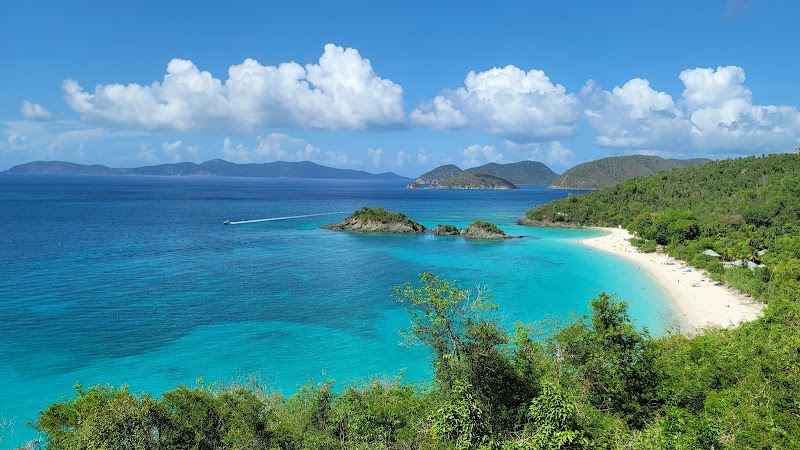Adventure Awaits: Unique Outdoor Experiences with Casa Coral in Fajardo, Puerto Rico
Casa Coral in Fajardo provides a hands-on outdoor experience combining hiking and kayaking amidst Puerto Rico’s vibrant landscapes. From lush forest trails to glowing nighttime waters, these adventures offer a perfect mix of excitement and practical preparation guidance.
Adventure Tips
Hydrate Often and Early
Puerto Rico's humidity and tropical climate require consistent hydration—carry at least two liters of water per person for hikes and kayaking outings.
Wear Durable Footwear
Rocky and uneven trail surfaces demand sturdy hiking shoes with good grip rather than casual sneakers to prevent slips and ankle injuries.
Start Early or Late
Temperatures peak midday, so schedule hikes and kayaking trips in the morning or late afternoon for cooler conditions and better wildlife encounters.
Check Tides Before Kayaking
Tidal shifts affect water levels and currents in mangroves; consulting tide charts ensures safer navigation and better wildlife spotting opportunities.
Adventure Awaits: Unique Outdoor Experiences with Casa Coral in Fajardo, Puerto Rico
Casa Coral in Fajardo offers an immersive gateway into Puerto Rico's outdoor wonders, where every activity challenges you to engage with the land and water on their terms. Just steps from your doorstep, the natural world invites you to hike through dense tropical forests where the trail climbs steadily over 3.5 miles with a 700-foot elevation gain, rewarding you with sweeping coastal views. The path’s dirt and rocky terrain demand solid footwear and focus but reward effort with encounters of old-growth trees that seem to lean in, daring you forward.
Water calls just as compellingly. Kayaking trips from Casa Coral’s shores slice through the mangroves, where currents push you gently onward, and the estuary pulses with life. This experience balances tranquility with focus, as you navigate twisting waterways shaped by tides and seasons. Night-time bio-luminescent kayak tours present a different rhythm—stars above, water glowing below—reminding you nature moves in phases that must be respected and timed correctly.
To get the most from your stay here, plan hikes and paddles for early mornings or late afternoons to avoid midday heat. Carry at least two liters of water, wear breathable layers, and pack lightweight rain gear as sudden tropical showers are frequent but short-lived. The region’s humidity makes moisture management a priority, so synthetic fabrics outperform cotton.
A polite warning: while these experiences are accessible to casual adventurers, they demand respect for the environment’s unpredictability. Watch your footing on uneven ground, be ready for sudden weather changes, and always check tide schedules before kayaking.
Casa Coral’s outdoor activities offer more than just exercise; they present a conversation with nature that’s fiercely alive and always demanding attention. For those ready to engage, it will repay you with memories rooted in both challenge and serenity.
Nearby Trips
All Adventures
Boat Charters
Water Activities
Adventures near Fajardo
Discover the unique and memorable adventures that make Fajardo special.
Frequently Asked Questions
Are the hiking trails around Casa Coral suitable for beginners?
The main trail near Casa Coral is moderate in difficulty with steady elevation gain and uneven surfaces. Casual hikers with reasonable fitness can manage it with proper footwear and pacing. Beginners should allow extra time and take frequent breaks.
Can I combine kayaking and hiking in one day at Casa Coral?
Yes, combining a morning hike with an afternoon kayaking trip is a popular approach. Just be sure to start early for hiking to avoid midday heat and allow plenty of time for rest and hydration between activities.
Is there wildlife to observe on these outdoor activities?
The area supports a diverse range of species including native birds like the Puerto Rican woodpecker, small reptiles, and marine life in the estuaries. Mangroves provide important habitat, so watch for playful fish and crabs during kayaking.
What safety precautions should I take when kayaking near Casa Coral?
Always check local tide schedules and weather forecasts before setting out. Wear a life jacket, stay within marked routes, and avoid kayaking alone, especially at night. Guides are recommended for bio-luminescent tours.
When is the best time to see bio-luminescence on the water?
The clearest bio-luminescent displays occur during new moon phases from late spring through summer. Warm, calm nights with little light pollution provide the best visibility for this magical experience.
Are there any historical sites accessible from Casa Coral hikes?
While the focus is on natural scenery, nearby Fajardo area includes remnants of colonial-era fortifications and fishing villages. Some trailheads offer glimpses of old pathways originally used by indigenous Taíno people.
Recommended Gear
Sturdy Hiking Shoes
Necessary for navigating rocky, uneven terrain safely throughout the year.
Hydration Pack or Water Bottles
Helps maintain hydration in tropical heat and humidity during all seasons.
Light Rain Jacket
Useful for sudden showers common in spring and summer to stay dry without overheating.
Quick-Dry Clothing
Wicks moisture and dries fast, helping with sweat and occasional rain exposure.
Local Insights
Hidden Gems
- "A secluded overlook along the trail offers panoramic views of the distant islands beyond Fajardo Bay."
- "An unmarked side path leads to a quiet mangrove cove favored by local fishermen."
Wildlife
- "Puerto Rican Parrot (endangered species)"
- "Mangrove crabs and juvenile fish in estuary waters"
- "Coquí frogs vocalizing after dusk"
History
"Fajardo’s coastal location made it a strategic point in Puerto Rico’s colonial past, with old forts guarding approaches against pirates and invaders. The area around Casa Coral holds traces of indigenous and colonial-era use."

